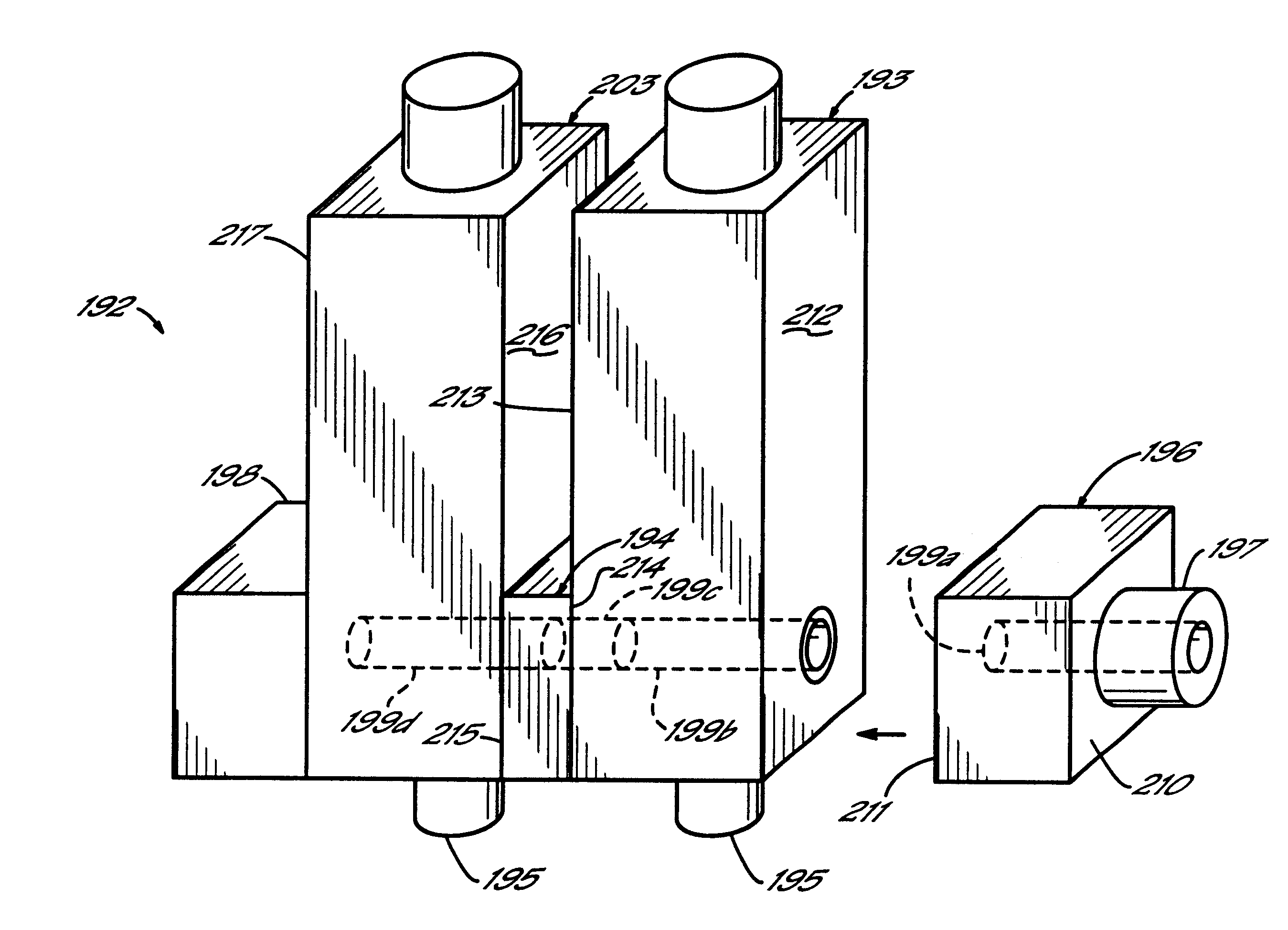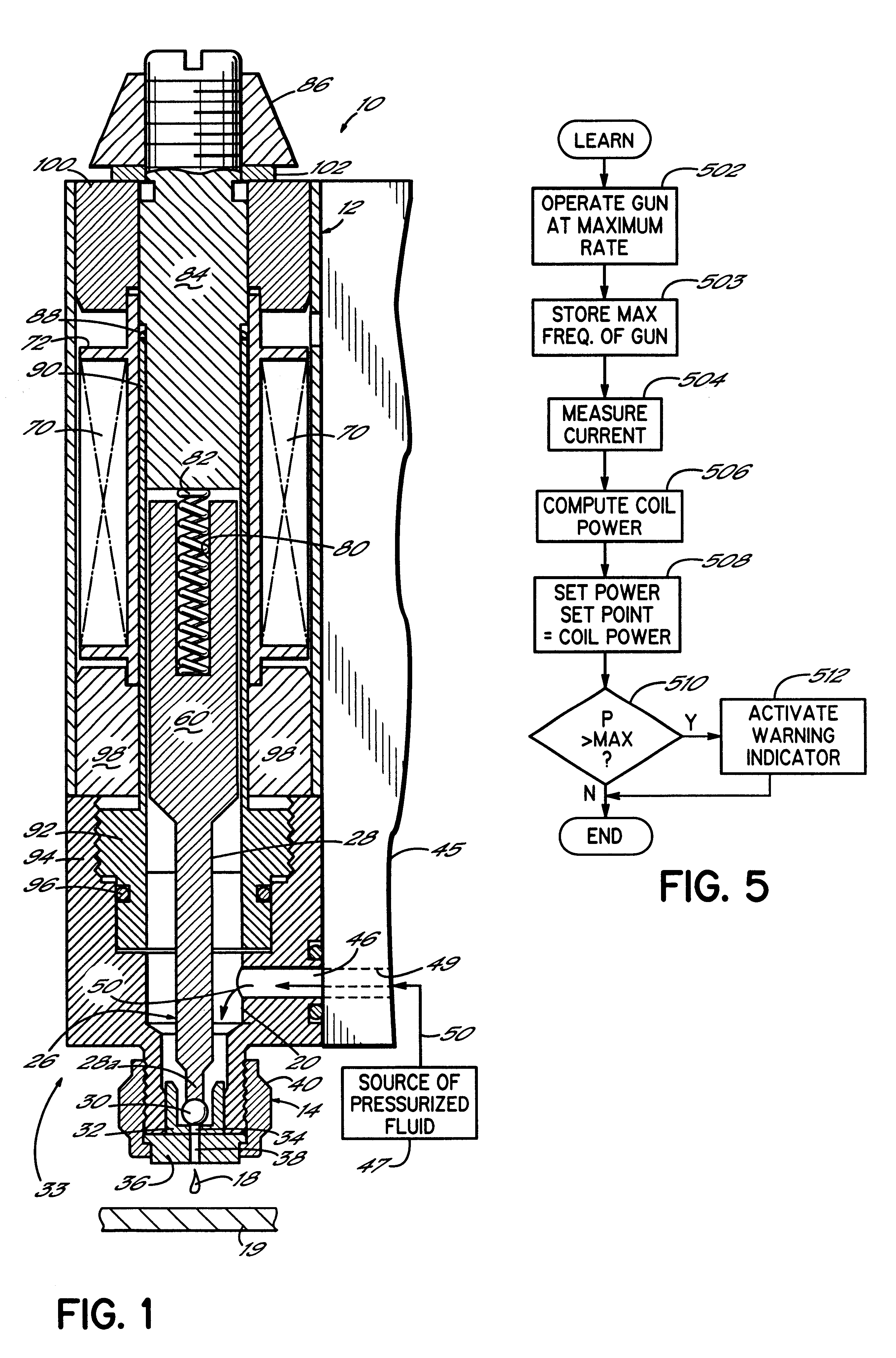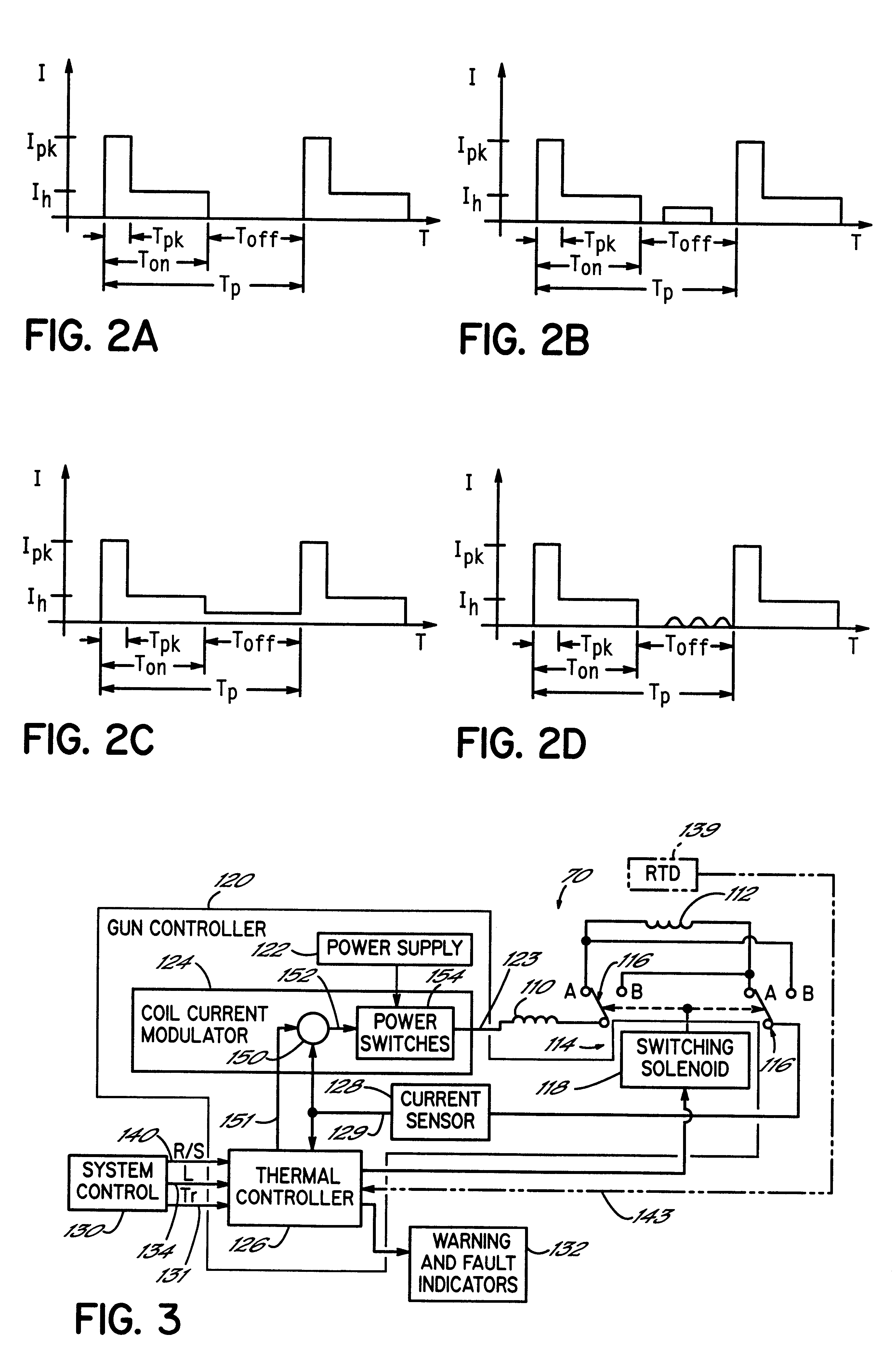Electrically operated viscous fluid dispensing apparatus and method
a technology of electric operation and viscous fluid, which is applied in the direction of lighting and heating apparatus, process and machine control, instruments, etc., can solve the problems of short short service life of electric fluid dispensers, and rapid increase of coil temperature, so as to improve the service life and improve the viscosity of fluid within the dispenser. , the effect of reducing the range of temperature fluctuations
- Summary
- Abstract
- Description
- Claims
- Application Information
AI Technical Summary
Benefits of technology
Problems solved by technology
Method used
Image
Examples
Embodiment Construction
Referring first to FIG. 1, an electrically operated viscous fluid dispenser or dispensing gun 10 comprises one or more dispensing modules or valves 33 mounted on a fluid distribution manifold plate 45 in a known manner. The dispensing valve 33 includes a dispenser body 12 and a fluid dispensing nozzle body 14. The dispenser 10 is adapted for dispensing high viscosity fluids, such as a hot melt adhesive, but other dispensed fluids can benefit from the invention as well. Such other fluids include soldering fluxes, thermal greases, heat transfer compounds and solder pastes. Furthermore, the dispenser 10 is mounted in a dispensing machine or system (not shown) in a known manner to dispense fluids in discrete amounts, preferably as droplets or dots, but alternatively in continuous beads. As shown in FIG. 1, the dispenser body 12 used in conjunction with the fluid dispensing nozzle body 14 is particularly constructed to dispense droplets 18 of the viscous fluid onto a substrate 19. Relati...
PUM
 Login to View More
Login to View More Abstract
Description
Claims
Application Information
 Login to View More
Login to View More - R&D
- Intellectual Property
- Life Sciences
- Materials
- Tech Scout
- Unparalleled Data Quality
- Higher Quality Content
- 60% Fewer Hallucinations
Browse by: Latest US Patents, China's latest patents, Technical Efficacy Thesaurus, Application Domain, Technology Topic, Popular Technical Reports.
© 2025 PatSnap. All rights reserved.Legal|Privacy policy|Modern Slavery Act Transparency Statement|Sitemap|About US| Contact US: help@patsnap.com



